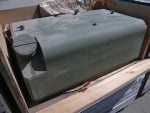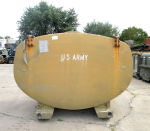- 3,346
- 2,254
- 113
- Location
- Pemberton, N.J.
Charge rate right after starting should be around 28 volts but it will drop down as the batteries come up. Fuel usage will sit right around a gallon per hour at full load. And are you aware that you can run a 55 gallon drum or other container with the Aux fuel line in that and it will automatically fill the regular tank once the level drops to a little less than half. This way you do not have to keep filling the small tank.








